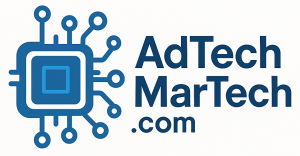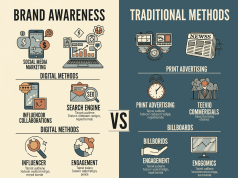As we move further into the digital age, the landscape of advertising continues to evolve rapidly. With advancing technologies, shifting consumer behaviors, and increasing regulatory challenges, the advertising industry is on the brink of transformation. Here are some key trends to watch in 2025 that will shape the future of advertising.
1. Personalization at Scale
The demand for personalized experiences is not new, but by 2025, advances in data analytics and artificial intelligence will make hyper-personalization more accessible. Brands will leverage big data to create campaigns that resonate with each individual consumer, tailoring messages, offers, and content to their specific preferences and behaviors. This will not only enhance customer engagement but also drive conversion rates.
2. Augmented and Virtual Reality (AR/VR)
Augmented and virtual reality are set to revolutionize how brands connect with consumers. By 2025, immersive experiences will become mainstream, allowing consumers to interact with products in virtual environments. Whether it’s trying on clothes virtually or experiencing a product in a simulated setting, AR and VR will offer unparalleled engagement opportunities, enhancing the customer journey in ways traditional advertising cannot.
3. Sustainability and Ethical Advertising
As consumers become increasingly aware of environmental and social issues, brands will need to adapt their advertising strategies accordingly. In 2025, sustainability will not just be a buzzword; it will be a core element of many marketing campaigns. Companies will emphasize their commitment to ethical practices and environmental responsibility, appealing to the growing demographic that values sustainability.
4. Voice Search and Smart Speakers
Voice search is rapidly gaining traction, and by 2025, it will dominate online searches. With smart speakers becoming commonplace, brands will need to optimize their content for voice search and develop innovative strategies that incorporate voice-activated purchasing. Advertisers will explore how to effectively engage with consumers through voices instead of visual platforms, creating a shift in content creation and campaign strategies.
5. Interactive and Engaging Content
As attention spans dwindle, traditional advertising formats may lose their effectiveness. In 2025, interactive content such as quizzes, polls, and gamified experiences will become crucial for capturing consumer interest. Brands that create engaging, participatory experiences will not only attract more attention but also foster deeper connections with their audience.
6. Artificial Intelligence and Chatbots
Artificial intelligence (AI) will play an increasingly vital role in advertising by 2025. From automating campaigns to analyzing consumer data for insights, AI-driven tools will enable brands to enhance efficiency and precision. Additionally, chatbots will provide real-time customer service, helping brands maintain continuous engagement with consumers even outside of traditional advertising hours.
7. Influencer Marketing 2.0
Influencer marketing is evolving beyond mere endorsements. By 2025, we’ll see a shift towards long-term partnerships where influencers align closely with brand values and cultural relevance. Micro and nano influencers will gain prominence, as brands recognize their authenticity and ability to engage niche audiences. This shift will demand more strategic planning and relationship-building within influencer marketing campaigns.
8. Data Privacy and Compliance
With increasing scrutiny on data privacy, the advertising landscape will face significant challenges by 2025. Brands will need to navigate complex regulations and adopt transparent practices to build trust with consumers. This will lead to the rise of privacy-first advertising, where companies prioritize ethical data use, consent, and consumer control over personal information.
9. Blockchain Technology in Advertising
Blockchain technology has the potential to change the advertising industry by promoting transparency and combatting fraud. In 2025, we can expect to see more brands using blockchain to verify the authenticity of ad impressions, clicks, and conversions. This will enhance trust between advertisers, publishers, and consumers, ultimately leading to more effective campaigns.
10. Shoppable Media
The integration of e-commerce into social media platforms is set to grow exponentially. By 2025, shoppable media will become a standardized practice, allowing consumers to make purchases directly from ads and social media posts. This seamless shopping experience will blur the lines between content and commerce, transforming how consumers interact with brands.
Conclusion
As we look ahead to 2025, the future of advertising promises both challenges and opportunities. Brands that stay ahead of these trends and adapt their strategies accordingly will not only thrive but will also build stronger, more meaningful connections with consumers. The evolution of technology and consumer expectations is reshaping the advertising landscape, and staying informed will be essential for success in this dynamic environment.









